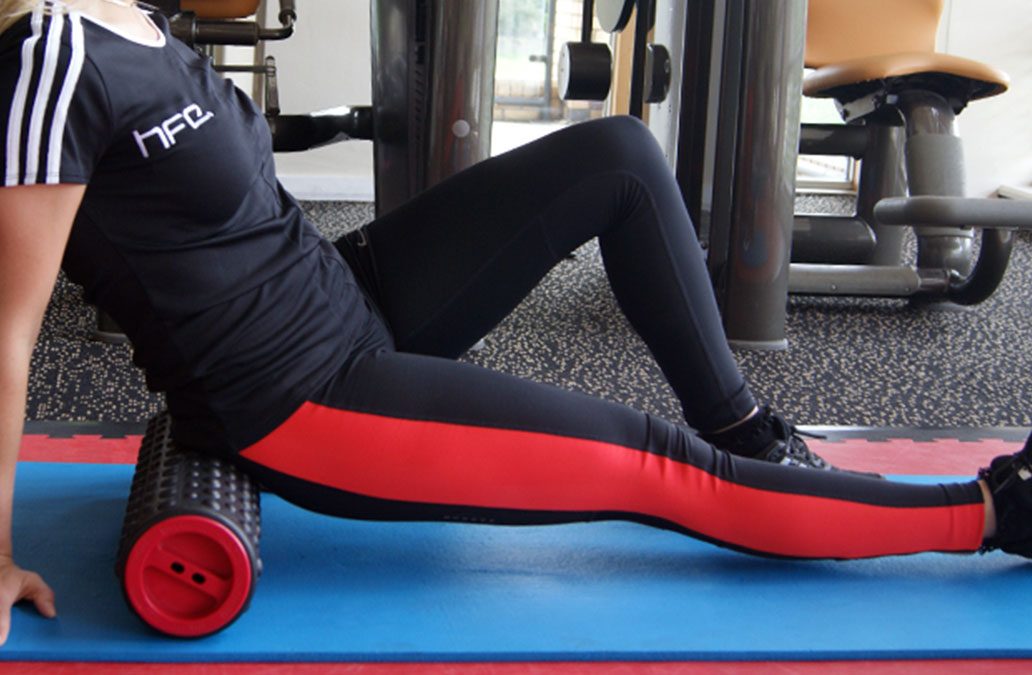Unless you have been living under a rock I’m sure you will have heard of the term myofascial release. But how much do you really know about what you are doing when you use a foam roller at the end of your workout?
Before we unpick the bones of myofascial release (MFR), first let’s remind ourselves what all the fuss is about fascia.
Historically, fascia was an overlooked structure, previously seen as the thing that was in the way of getting a good view of the muscles in the body. But now we have a greater understanding and respect for the clear, cling-film like coating of the entire muscular system.
Characteristics of Fascia    Â
- Has a tensile strength similar to steel
- Responds instantaneously to external and internal stimuli
- In conjunction with muscles, it provides multi-directional tensioning throughout the body AKA “The Sling-Systems”
- Plays a key role in functional core stability
- Provides fluidity to motion
- Stores cellular memory
- Elicits pain
- Transfers kinetic energy, load and force through the entire musculo-skeletal system
Now for the science… E=mc2
John F.Barnes (international expert on MFR), bases his principles of MFR on Einstein’s famous formula E=mc2. Interestingly, he relates the meaning of the formula to understanding the dysfunctions associated with the myofascial system the principles behind treating them. The formula illustrates that solidity is only an illusion and that everything is energy; different frequencies of vibrational energy, to some degree or another.
Barnes advocates that trauma (and I would add to that; inefficient posture and motion) can significantly change the force vectors passing through the body. This can disrupt the ability of energy to flow freely through the body, resulting in further dysfunction, inefficiency, altered bio-mechanics, injury and pain. Barnes likens the myofascial system to being the’ fibre optic’ communication system of the body. And hence, a blockage in transmission will lead to a failure to function.
Myofascial dysfunction is something that affects all of us, at some point in our lives, to a greater or lesser degree. Being a physiotherapist, it is something I see in clinic on a daily basis. Whether it’s lateral knee pain as a consequence of a lumbo-pelvic pathology, or elbow pain from a rib cage problem, MFR plays a significant role in treatment and rehabilitation. I believe education and empowerment is the key to teaching individuals how to perform effective self MFR techniques.
The Benefits of MFR
- Reduction in pain
- Increase in range of motion
- Neutralisation of posture and alignment
- Restoration of optimal myofascial length-tension relationships
- Harness efficient movement and maximise function
ROCKTAPE have tools which are specifically designed to help individuals MFR effectively. There are many techniques and uses for these products, here are just a few:
- RockBalls can be used to release a build up of tension around upper trapezius and levator scapulae
- The RockNRoller (foam roller) is ideal for releasing large surface areas such as the hamstrings and quadriceps
- RockBlade is a new product, designed for releasing areas like the Iliotibial band
- RockTape can be used to ‘offload’ structures, redistributing forces and promoting healing
 Learn more about myofascial release by visiting their blog.
Written by HFE Pilates tutor and physiotherapist Emma Selway (MCSP, SRP)
References:
John F, Barnes PT, LMT, NCTMB: (2016); The Myofascial release approach. massagemag.com
